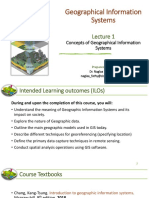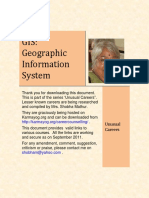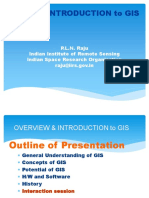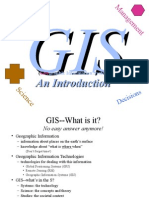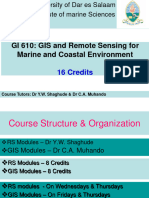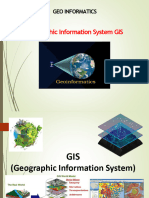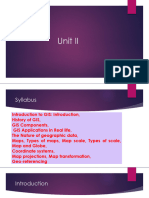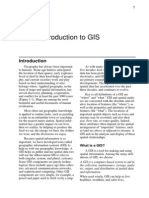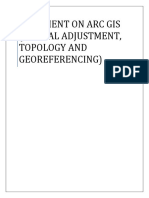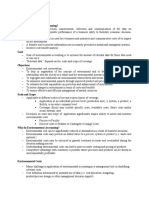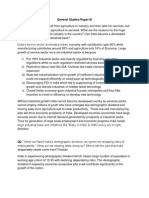Tewodros Meshesha
NSE/4838/05 [ADD]
Addis Ababa
University College
of Natural Science
Computer Science
Dept
Selected Topics: GIS
Assignment
�Google Earth
Google earth is a virtual globe, map and geographical information program that was originally
called Earth Viewer 3D created by Keyhole, Inc, a Central Intelligence Agency (CIA) funded
company acquired by Google in 2004.
We can explore Google Earth in three ways: Desktop, web and mobile and we can get the following
features
Fly around the world in the flight simulator
Explore Google Earth
Measure area, distance, and elevation
Draw paths and add models
Add overlays
Viewing Timelines
KML
Basics of the time slider
Viewing GPS tracks
Google Maps
Google Maps is a Web-based service that provides detailed information about geographical
regions and sites around the world. In addition to conventional road maps, Google Maps offers
aerial and satellite views of many places. In some cities, Google Maps offers street views
comprising photographs taken from vehicles.
A route planner offers directions for drivers, bikers, walkers, and users of public
transportation who want to take a trip from one specific location to another.
The Google Maps application program interface (API) makes it possible for Web site
administrators to embed Google Maps into a proprietary site such as a real estate guide or
community service page.
Google Maps for Mobile offers a location service for motorists that utilizes the Global
Positioning System (GPS) location of the mobile device (if available) along with data
from wireless and cellular networks.
Google Street View enables users to view and navigate through horizontal and vertical
panoramic street level images of various cities around the world.
Supplemental services offer images of the moon, Mars, and the heavens for hobby
astronomers.
Check out the new Slooh Space Camera layer to see live images of galaxies, objects and
more
View constellations and the movements of the planets
Hear astronomy podcasts and read celestial research from expert sources
Create and share your own imagery, place marks and more
Google Sky
Google Sky includes a number of different ways to explore the universe. The initial view shows
the visible universe and is a mosaic of images from the Sloan Digital Sky Survey, the Digitized
Sky Survey and the Hubble Space Telescope. Select the thumbnail images at the bottom of the
display to bring up the planets, the constellations, highlights from the Hubble Space Telescope,
famous stars, galaxies and nebulae, views of the universe in the x-ray, ultraviolet and infrared
and podcasts about upcoming astronomical events from Earth and Sky Podcasts. Other items
available through Google Sky:
Infrared - An infrared view of the sky from the Infrared Astronomical Satellite (IRAS).
Change the transparency of this layer by moving the slide bar to blend the optical and
infrared.
Microwave - A view of the microwave sky from NASA's Wilkinson Microwave
Anisotropy Probe (WMAP), which shows the universe as it was 380,000 years after the
big bang.
Historical - The sky as drawn by Giovanni Maria Cassini (printed in 1792) showing the
constellations in their classical form from the collections of David Rumsey
With Sky in Google Earth, we can:
Check out the new Slooh Space Camera layer to see live images of galaxies, objects and
more
View constellations and the movements of the planets
Hear astronomy podcasts and read celestial research from expert sources
Create and share your own imagery, place marks and more
Application Areas of GIS
Urban Planning, Management & Policy
GIS technology is used to analyze the urban growth and its direction of expansion, and to find
suitable sites for further urban development. In order to identify the sites suitable for the urban
growth, certain factors have to consider which is: land should have proper accessibility, land
should be more or less flat, land should be vacant or having low usage value presently and
it should have good supply of water. More specifically, it used in
Land acquisition
Economic development
Code enforcement
Housing renovation programs
Emergency response
Crime analysis
Tax assessment
Environmental Sciences
Many human activities produce potential adverse environmental effects which include the
construction and operation of highways, rail roads, pipelines, airports, radioactive waste disposal
and more. Environmental impact statements are usually required to contain specific information
on the magnitude and characteristics of environmental impact. More specifically, it used in
Monitoring environmental risk
Modeling storm water runoff
Management of watersheds, floodplains, wetlands, forests, aquifers
Environmental Impact Analysis
Hazardous or toxic facility siting
Groundwater modeling and contamination tracking
Rural & Forestry Planning
GIS can be used to create more effective and efficient farming techniques. It can also analyze
soil data and to determine: what are the best crop to plant? Where they should go? How to
maintain nutrition levels to best benefit crop to plant? It is fully integrated and widely accepted
for helping government agencies to manage programs that support farmers and protect the
environment. This could increase food production in different parts of the world so the world
food crisis could be avoided. More specifically, it used in
Pest/Disease tracking
Crop monitoring
Yield prediction
Soil analysis
Role Computer Professional in GIS application areas
Manages data conversion, design, development, training and quality assurance for GIS software
systems applications.
Develops, implements and manages GIS data and its organizational structure/database
environment. Analyzes and interprets spatial data used in the production of maps, reports, and
other products.
Manages activities involving GIS projects. Develops and implements methodologies for creation
and use of spatial data, including digitizing, editing, coding, and annotating line, point and
polygon data.
Consults with departments in the development of their GIS plans, goals and objectives.
Coordinates GIS activities between the company and other external agencies. Retrieves,
processes and analyzes archive spatial data.
Provide training for staff in the use of GIS.
�Designs, develops, and maintains GIS production schedules. Manages and monitors project
progress to ensure timely completion of projects.
Designs GIS project methodology for assigned projects to include the primary staff assistance in
identifying needs and acquiring GIS products and services.
Functions as database administrator for all GIS related processes and projects. May participate in
special projects working with special requests, special report preparations and GIS presentations.
Determines budgetary requirements for GIS systems and provides long-range planning related to
GIS.
Maintains current knowledge of trends and developments in the geographic information
systems field for application to responsibilities under charge.
Sources
https://earth.google.com
http://www.sssi.org.au/userfiles/docs/Spatial%20Information%20&
%20Cartography/documents_13073575211586433646.pdf
https://www.google.com/sky/about.html
http://whatis.techtarget.com/definition/Google-Maps



